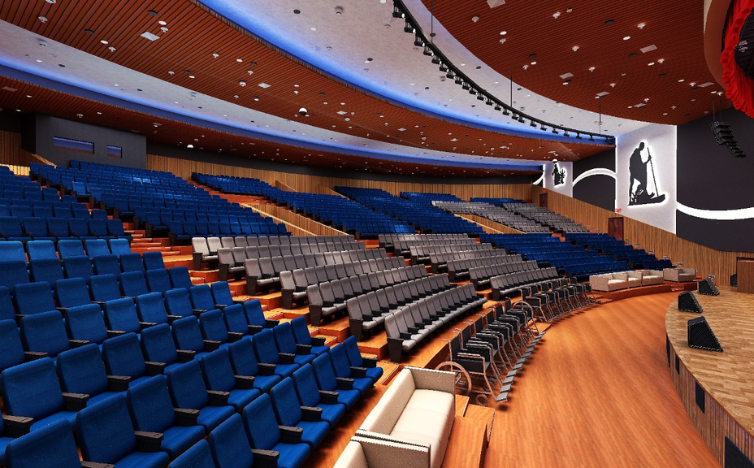The acoustics of an auditorium play a crucial role in the overall experience of any event, be it a concert, lecture, or theatrical performance. Proper acoustic design ensures that sound is evenly distributed, clear, and free from distortions, providing an immersive experience for the audience. This article explores the essential aspects of auditorium acoustics and offers practical tips for optimizing sound quality.
Understanding Auditorium Acoustics
Auditorium acoustics refer to how sound behaves within the space. Key factors include sound reflection, absorption, and diffusion. Reflection ensures that sound reaches all parts of the room, while absorption prevents echoes and reverberation. Diffusion helps in evenly distributing sound, avoiding dead spots where sound may be muffled or unclear.

Key Elements of Acoustic Design
- Room Shape and Size: The shape and size of an auditorium significantly impact sound distribution. A well-designed auditorium should have a shape that promotes even sound distribution, avoiding long, narrow spaces that can cause sound to bounce unevenly.
- Materials Used: The choice of materials for walls, ceilings, and floors affects sound absorption and reflection. Materials like carpet and acoustic panels can absorb excess sound, while harder surfaces like wood and concrete can reflect sound, enhancing clarity.
- Seating Arrangement: The arrangement of seats can influence how sound travels. Stadium-style seating, for example, ensures that sound reaches the audience directly, reducing the need for excessive amplification.
Common Acoustic Challenges
- Echoes and Reverberation: Excessive reverberation can muddy sound, making it difficult to understand speech or enjoy music. Proper use of absorptive materials can mitigate this issue.
- Sound Shadows: Obstructions like pillars or balconies can create sound shadows, areas where sound is noticeably weaker. Strategic placement of speakers and reflective surfaces can help overcome this problem.
- Background Noise: HVAC systems, lighting, and even audience noise can interfere with sound quality. Soundproofing and careful system design are essential to minimize these distractions.
Solutions for Better Acoustics
- Acoustic Panels: Installing acoustic panels on walls and ceilings can significantly improve sound quality by absorbing excess noise and reducing echoes.
- Sound Reflectors: Strategically placed reflectors can direct sound towards the audience, ensuring even distribution and clarity.
- Advanced Sound Systems: Modern sound systems with directional speakers and advanced equalization can enhance sound quality, especially in larger auditoriums.
Contact Muhammad Shaheen Carpentry at 971 55 219 6236, and discover the transformative science of soundproofing for your space.
Conclusion
Optimizing the acoustics of your auditorium is essential for delivering a superior auditory experience. By understanding the key elements of acoustic design and addressing common challenges, you can create a space that enhances every event. Whether you’re hosting a concert, lecture, or theatrical performance, superior acoustics will ensure that your audience enjoys every moment.

